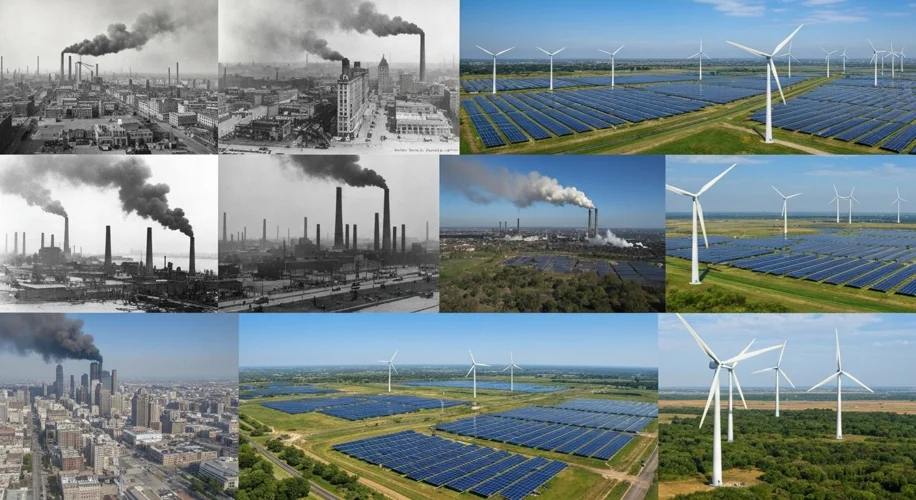The hum of innovation, the promise of clean energy – solar power seems like a beacon of a brighter future. Yet, even this glowing prospect can find itself entangled in the long, often contentious, history of environmental regulation in the United States. Recent legal challenges against the Environmental Protection Agency (EPA) concerning solar power grants, while seemingly modern, echo a saga that began decades ago with the very establishment of the EPA itself in 1970.
Imagine the late 1960s. The air in many American cities was thick with smog, rivers were catching fire, and the vibrant hues of nature were being dulled by unchecked industrial progress. Public outcry grew, fueled by alarming reports of pollution’s toll on human health and the environment. It was a nation waking up to a stark reality: its industrial might, while bringing prosperity, was also poisoning its nest.
This growing alarm culminated in a watershed moment. On December 2, 1970, President Richard Nixon signed into law the National Environmental Policy Act (NEPA), establishing the EPA. This wasn’t just another government agency; it was a bold declaration that environmental protection was now a federal priority, a commitment to safeguarding the air we breathe, the water we drink, and the land we inhabit. The EPA was tasked with a monumental mission: to conduct environmental impact assessments, set and enforce standards, and coordinate environmental protection efforts across federal agencies.

The early years of the EPA were a whirlwind of establishing foundational policies and tackling the most visible environmental crises. Landmark legislation followed, like the Clean Air Act of 1970, which set ambitious goals for reducing air pollution, and the Clean Water Act of 1972, aimed at restoring the nation’s waterways. These acts were not merely bureaucratic pronouncements; they were hard-fought battles against powerful industries, representing a fundamental shift in how the nation viewed its relationship with the natural world.
However, the path of environmental policy has never been a straight line. The EPA and its mission have been shaped by political winds, economic pressures, and evolving scientific understanding. Energy policy, in particular, has been a constant battleground. For decades, the dominant energy sources were fossil fuels, deeply embedded in the nation’s economy and infrastructure. The idea of transitioning to cleaner, renewable sources like solar power was, for a long time, a niche concept, often viewed as expensive or impractical.
As the 21st century dawned, the urgency of climate change became undeniable, and the focus on renewable energy intensified. Policies began to shift, encouraging investments in solar, wind, and other green technologies. This created a complex ecosystem where federal grants, tax incentives, and regulatory frameworks intertwined to foster growth in the renewable energy sector. The EPA, in its role, has been instrumental in developing standards and guidelines for these emerging technologies, including solar power grants aimed at accelerating their adoption.
But this very system, designed to promote clean energy, can also become a point of friction. The recent lawsuits challenging EPA’s administration of solar power grants are a testament to this. Such legal battles often hinge on the interpretation of regulations, the scope of agency authority, and the balance between promoting innovation and ensuring equitable distribution of public funds. They highlight the inherent tension between rapid technological advancement and the meticulous, often slow-moving, wheels of government regulation.

The implications of these legal challenges extend far beyond the specific solar grants in question. They touch upon the very authority and effectiveness of the EPA. A robust and clear regulatory framework is essential for fostering trust and ensuring the long-term viability of critical sectors like renewable energy. Conversely, frequent legal challenges and uncertainty can stifle investment and slow down progress.
This history is not just about laws and agencies; it’s about the evolving conscience of a nation. From the fight against visible pollution that choked our cities to the global challenge of climate change, environmental policy has mirrored our growing awareness and our struggle to balance progress with preservation. The EPA, established in an era of urgent environmental awakening, continues to be at the forefront of this ongoing dialogue, navigating the complexities of energy policy and the ever-present need to protect our planet for future generations.
The story of the EPA and environmental policy is a continuing narrative, one where the promise of a cleaner future is constantly being shaped by the echoes of past decisions and the legal challenges of the present. The recent disputes over solar grants are merely the latest chapter in this compelling, vital history.

